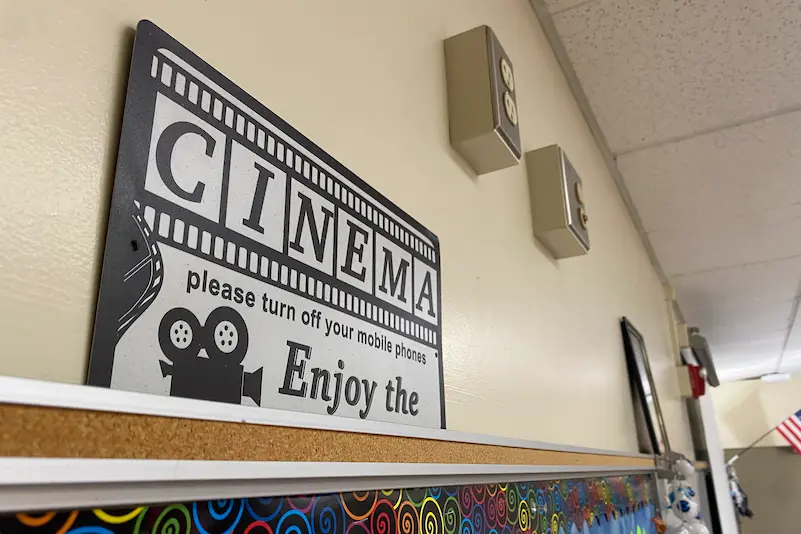Class Spotlight: Film History
Behind the scenes of a class that's about more than the movie

When I think of Film History, I picture silent, black-and-white reels and essays on De Niro’s character development in The Godfather. I think: Gene Autry, Marilyn Monroe, Car Chase, repeat.
But here at PHS, the course is something entirely different. It goes miles beyond my narrow-minded assumptions and doesn’t make students suffer through endless Westerns or dull shot-by-shots.
“At the moment, we’re looking at global cinema,” says Mr. O’Connor, who teaches the class at PHS. “A lot of people, when they think of the film, think it’s very American-centric. This might be one of the few opportunities that the students get to appreciate different forms of cinema.”
Watching movies from around the world, according to Mr. O’Connor, can reveal a lot about other cultures. In regions other than the United States, films closely reflect the cultural identities of the places they come out of. Currently, students are exploring Hindi culture in India through Bollywood films, the largest film business by production in the world.
The course begins with an introductory Lights, Camera, Action! unit, where students gain the technical skills necessary to understand film from a more critical perspective. In Mr. O’Connor’s words, students are taught “how to go from being a passive observer of film to an active watcher of film.” Next, students learn about censorship in the 1930’s and the effect that it had on representation in film. Mr. O’Connor likes to spend the month of October touring the evolution of horror films, which students find both entertaining and eye-opening.
The upcoming unit, Marginalized to Mainstream, combines themes of censorship and global cinema to examine how female, LGBTQIAP+ and Black actors were swept out from under the spotlight. It highlights the historical barriers that these oppressed groups have faced and their resilience in overcoming them.
But, for final projects, students get to experience the other side of the camera. They write and produce their horror films, short films, documentaries, or mockumentaries.
“Movies are so much more than a storyline and a plot,” admires Santiago, a junior taking Film History this year. Santiago has always been an avid film-watcher but believes the class has given him a whole new perspective. “I'm learning things I've never learned about movies before. It's all very interesting, and I'm also enjoying watching different films.”
As an art credit class, Film History is both manageable and engaging. Work that isn’t finished in class becomes homework, but it’s minimal. “As long as you're paying attention in class, the tests and homework aren't too much,” Santiago explains. Even better: students who explore the concepts learned in class on their own time are often rewarded with extra credit.
What I found most interesting about the class is that it challenges students to think critically, a tool that can be applied across subjects. In this way, students aren’t only learning about film, but strengthening their skills for classes like English, history, and more. This, Mr. O’Connor believes, is the class’s greatest power.
“I also love this class because I think it focuses on the idea of our role within a wider society,” he attests. “It shows the choices and forms of expression that we use, how we represent who we are, and what our thought process is.”
Film History is the perfect class for anyone interested in expanding their knowledge of the world around them, seeking to question what they’re told, or just hoping to watch some good movies. With both material and psychological skills, it offers lifelong takeaways for all of us.

